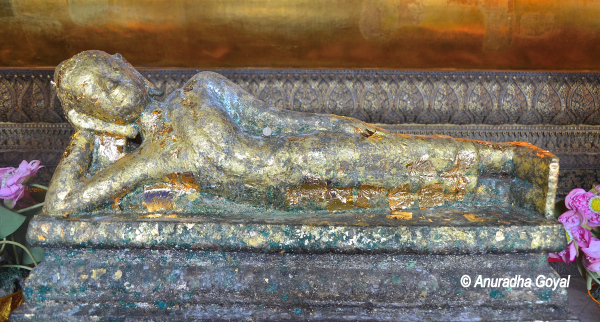
Wat Pho – the largest Wat or temple in Thailand is home to the wonderful and giant gold plated reclining Buddha statue. I had a very hurried visit to this Wat, which is actually a complex with many things to offer and many interesting structures inviting you. In the absence of leisurely time, I decided to spend time with the Buddha who is getting ready for his Mahaparinirvana in all his glory. You are not allowed with your shoes on inside the chamber of Buddha, but the funny part is you are not even allowed to keep it out, Instead you are provided with shoulder bags in which you must carry the shoes with you. It defies my logic of why shoes should be kept out but as they say ‘do in Rome as the Romans do’, I carried on.
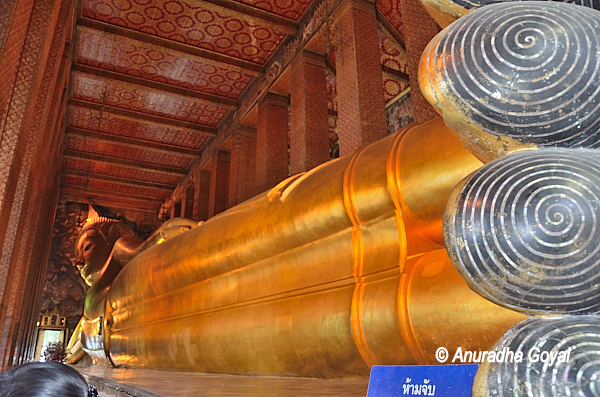
The room that houses the reclining Buddha seems to be made to cover the statue and the statue just fits in with a small circumambulatory path around it. You enter the temple from the side of Buddha’s head and his curls sitting nicely on his right arm is the first thing you see. The scale of his head hits you before you stretch your neck to take a look at his elongated body.
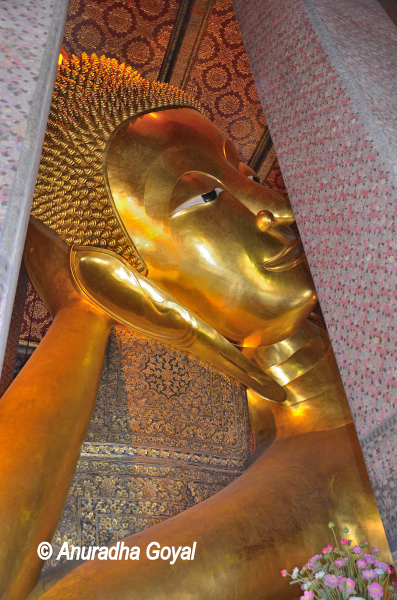
As you look closely at his fish shaped eyes made in white mother of pearl lost in a thought, they inspire you to go inside and reflect on the ‘Maya’ that this world is. I looked at his elongated ears and the three lines on his neck and started looking for ‘Mahapurush Lakshana’ or the signs on the body that mark the super human beings. I could see his Ushnisha or the protrusion on his head and urna or the small protrusion between his eyebrows. I walked along his body till I reached his giant feet, another of the ‘Mahapurush Lakshanas’. The bottoms of his feet or the soles are again made in mother of pearl and has the relevant iconography of Buddha embedded in them. With too many tourists around, I could not look closely at the feet but now after looking at the close-up of the feet I could see that both feet have similar signs and there is a roundel in the middle of the sole that in my opinion should be a Chakra or the wheel but it looks more like lotus here. Rest of the sole is divided into rectangular parts with a sign in each of them. I could spot some but missed most. Need a monk or a Buddhologist to guide me through these.
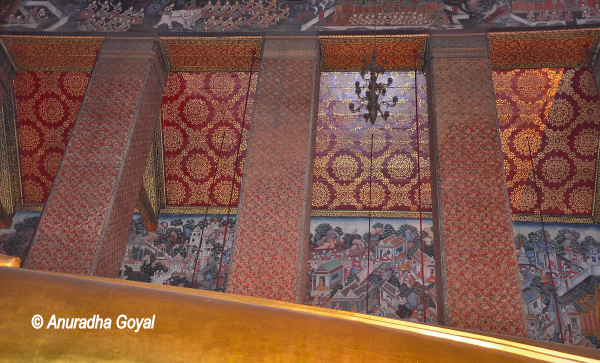
The back of the statue is plain but it gives you the indication of Buddha’s robe that is not very evident from the front. Behind the head Buddha’s head rests on two box-like pillows in blue color with rich glass mosaic work. You can not see the whole statue in one go, as there are pillars in front of it and this reminded me of a similar reclining Buddha image at Ajanta Caves that too is behind a row of pillars thought it can be viewed in totality from the other end of the chaitya.
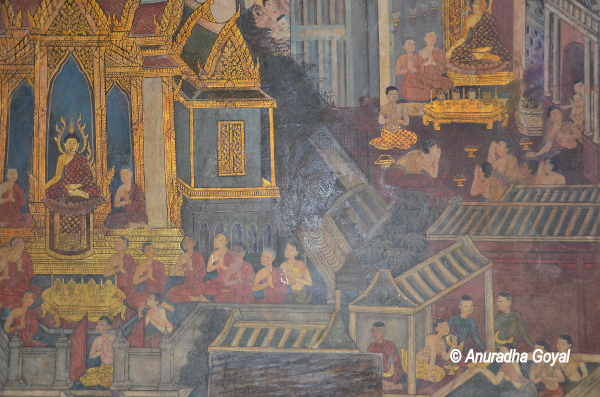
The walls of this hall and doors have stories from Buddha’s life painted all over. The colors used are dark with ample gold to highlight them. The Buddha can be identified with the Halo behind him while for identifying rest of the characters I needed to spend some more time there. Style of painting seemed somewhere between Thangkha and Ajanta paintings. Pillars and the ceiling are also in intricate patterns that I would associate more with central asian style of painting. The fact that stories adorn the walls and the decorative patterns on ceilings is another resemblance Wat Pho has with Ajanta paintings that also follow the same pattern.
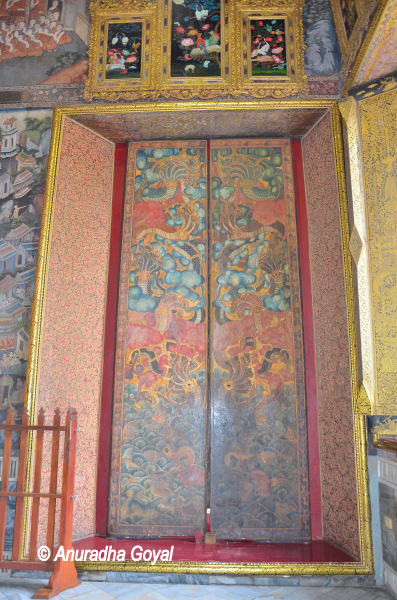
There was a row of bowls kept for the devotees to put coins in. If I am not wrong this is a asking for a wish or saying thank you for a wish fulfilled ritual where you chant a mantra and keep putting a coin in each of these bowls something very similar to turning a rosary. The number usually followed is 108 like in a rosary.
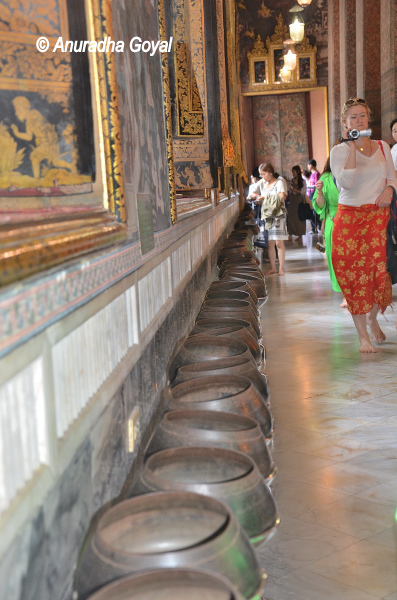
In the complex I could see giant representations of the Garuda as the dwarpala, somewhere indicating that even in Thailand Buddha is seen as the incarnation of Vishnu as Garuda is the vehicle of Vishnu and in typical Buddhist iconography we hardly find its mention. There is a descendent of the Bodhi tree of Bodh Gaya in the complex.
I hope to go back to have a closer look at the complex sometime.






0 comments:
Post a Comment